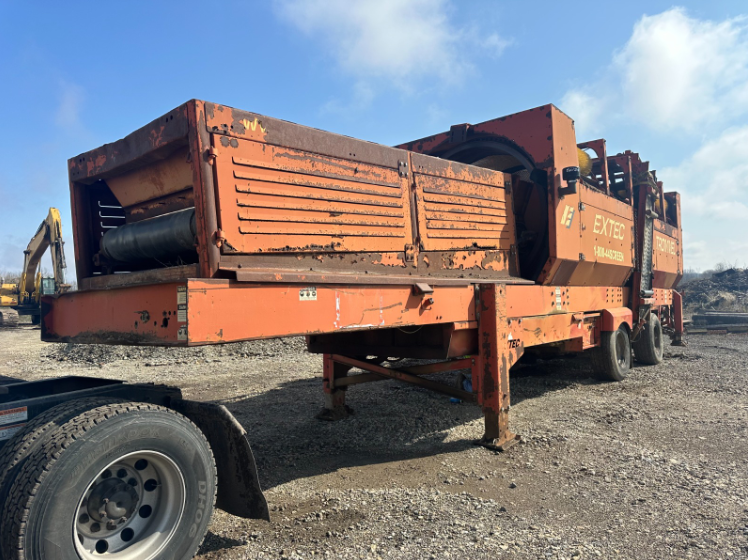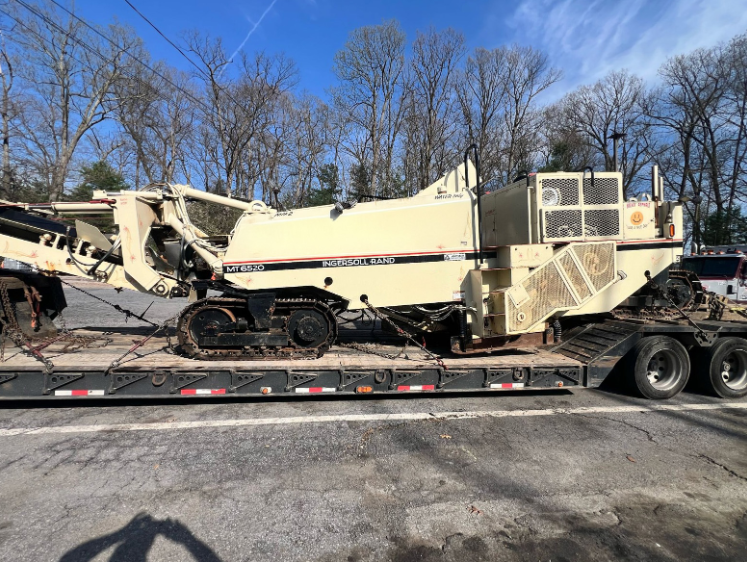
In logistics, the real work starts long before the wheels begin to turn. Before the cargo is loaded, before the permits are pulled, planners need to work out the route. Some journeys are, naturally, very straightforward—say, moving a container or two from Miami FL to Washington DC on Interstate 95. But when you’re hauling heavy machinery or multiple vehicles across cities, states, or borders, finding the optimum itinerary will need a little more time and head scratching.
Put simply, route planning is the engine behind STT Logistics Group’s precision. It’s the process of figuring out how to get freight from origin to destination in a way that’s as efficient, safe, and cost-effective as possible.
And while the job may sound simple, the reality is anything but. Multiple stops, road weight restrictions, fuel costs, border rules, weather, bridges, customer timeframes—they all play a part. That’s why at STT Logistics Group, we don’t just plan—we optimize. In fact, we’re among the almost 30% of logistics companies that now rank route planning and fleet utilization as top priorities.
In this guide, we’ll break down the different types of route planning, how it works, the role of software and AI, and how STT handles even the most complex jobs with confidence.
What Is Route Planning in Logistics?
Route planning in logistics is the process of determining the most effective path for moving goods across cities, countries, or continents. It’s not always about simply choosing the fastest road from point A to point B—there are dozens of variables that need to be taken into account to determine the best path to follow for cost, time, safety, and customer satisfaction.
Here are just eight variables affecting route planning in logistics:
- Pick-up and delivery time windows
- Number of stops (for multi-stop route planning)
- Driver working hours
- Vehicle type and load capacity
- Road weight restrictions
- Bridge clearances
- Weather and traffic conditions
- Customs regulations (cross-border hauls)
How Route Planning Works in Practice
To define it more clearly, route planning is the process of designing the optimal path for delivery based on constraints, goals, and real-time data. In freight logistics, it helps determine which route best supports cost-efficiency, compliance, and on-time delivery.
The complexity of logistics has grown over recent years, with route planning affected by factors like higher customer expectations, who require real-time updates, and ever-evolving regulations (e.g. Virginia’s stricter oversized loads legislation). As such, the need for smart routing has grown—today, top firms like STT Logistics Group rely on route planning software to automate, analyze, and refine routes using algorithms and live data inputs.

Why Is Effective Route Planning So Important in Freight Logistics?
When you’re moving freight—especially heavy hauling—guesswork just won’t cut it. The success of any delivery depends on strategic, well-informed planning. And that’s exactly what logistics route planning delivers.
For starters, route planning has a direct impact on cost control. It identifies the shortest, safest, and least congested paths, reducing unnecessary fuel consumption and avoids time-wasting detours.
Every shipment must comply with legal, environmental, and client-specific requirements. Oversized loads, for example, may need special permits, restricted travel times, or support vehicles. A good plan also supports better use of your drivers. Well-planned routes align with hours-of-service limits, reduce fatigue, and maximize available driving time. That’s a three-fold win for safety, compliance, and driver morale.
Let’s not forget the customer experience. Because yes, delays cost money—but they also erode trust. When deliveries are late or unpredictable, it reflects poorly on everyone involved. But when route planning is done right, it facilitates transparency, consistency, and clear communication at every stage—and our clients walk away fully happy with our service.
Core Benefits of Route Planning
- Cost reduction through fuel and labor optimization
- Risk mitigation via regulation compliance
- Increased safety through predictable driving hours
- Higher customer satisfaction via timely deliveries
- Better coordination between drivers, dispatch, and clients
At STT Logistics Group, we know route planning is a cornerstone of good logistics. It’s how we deliver heavy freight with a light stress load.
Static vs. Dynamic Routes
In logistics, while there’s always a pick-up location and destination, not every delivery follows the same path—or the same planning method. Choosing between static and dynamic route planning depends on the kind of freight we’re moving, the level of predictability along the way, and the degree of flexibility required.
| Feature | Static routes | Dynamic route planning |
| Adaptability | Low | High |
| Ideal use case | Routine shipments | Complex or variable loads |
| Planning frequency | One-time setup | Ongoing, real-time |
| Risk management | Limited | High |
| Efficiency under stress | Moderate | Excellent |
Static Routing
Static routes—sometimes referred to as fixed routes or predefined routes—are just what the term suggests: fixed, repeatable routes planned once and reused over time. They’re ideal for jobs that follow a consistent schedule, such as daily deliveries to the same construction site or routine equipment runs for long-term clients. Once optimized, these routes reduce planning time and simplify driver coordination.
However, static routes don’t offer much flexibility. They can’t adapt to traffic jams, road work, or unexpected detours. This is where dynamic route planning comes in.
Dynamic Routing
This approach is flexible by design. It uses real-time data—e,g, weather conditions, delivery windows, or last-minute pickup requests—to calculate the most efficient route at any given moment. As traffic builds, roads close or open, and customers make changes to their availability. Constant adaptation is needed in order for things to stay on track.
For jobs involving oversized loads, multi-stop pickups, or sensitive timelines, dynamic routing offers the agility needed to adjust on the fly.
At STT Logistics Group, we don’t default to one or the other—we weigh the job, assess the risk, and choose the route planning model that gives our client the best outcome. Sometimes it’s about routine. Other times, it’s about real-time.
The Role of Route Planning Software and AI Integration
In the 21st-century logistics world, instinct and experience are still key factors in every mission—but data is what drives precision. That’s where route planning software, powered by AI, comes into play. These tools allow logistics teams to create, adapt, and optimize delivery routes with a level of speed and insight that manual planning simply can’t replicate.
The global route optimization software market, already huge, is growing fast—it’s projected to balloon from $8.51 billion in 2023 to over $21 billion by 2030. The industry is investing heavily in smarter, faster routing tools to help companies like STT provide an even better product.
Modern route optimization platforms go way beyond looking at a map—they can process dozens of real-time inputs: delivery time windows, vehicle load capacity, traffic congestion, road restrictions, weather patterns, and even driver availability. Thanks to AI-driven algorithms, these systems can instantly suggest the most efficient and cost-effective routes—often adjusting them on the fly.
Here’s what AI-enhanced route planning enables:
- Real-time rerouting based on live traffic, weather, or border delays
- Intelligent sequencing of pickups and deliveries for maximum efficiency
- Predictive ETAs that adjust automatically when conditions change
- Instant compliance checks for axle limits, road type restrictions, and regional permit needs
- Better visibility for dispatchers, drivers, and clients—all updated in real time
Planning Multi-Stop, Cross-Border and Complex Hauls
Many logistics jobs involve multiple stops, multiple shippers, and a tightly managed timeline. That’s where multi-stop route planning becomes essential.
Rather than planning one single route, dispatchers must account for sequencing, time windows, load distribution, and legal requirements across every stop. One delay at pickup #2 can jeopardize delivery #4—and when your cargo weighs tens of thousands of pounds, every detail matters.
A recent STT job is a perfect example: nine units, four states, one final destination—the Port of Miami. To make it work, we had to manage pickups across Maryland, Virginia, Georgia, and Florida, and coordinate arrivals so that all equipment reached the port on schedule for overseas shipment.
To succeed with complex multi-stop logistics, we build each route around:
- Pickup and drop-off sequencing: ensuring the right items are loaded in the correct order
- Driver hours and rest breaks: balancing legal requirements with time-sensitive moves
- Load balancing: distributing weight across the route to prevent axle violations
- Stop-specific requirements: like liftgate needs, escort services, or special access hours
- Clear communication: between dispatch, drivers, shippers, and receiving teams
Example: Let’s take a look at what effective route planning might look like for an oversized haul from Kansas City to Quetzaltenango in Guatemala:
| The Job Cargo: 2 oversized dumper trucks, purchased at auction Origin: Kansas City, Missouri, USA Stop-Off: Mexico City, Mexico (for additional machinery pickup) Final Destination: Quetzaltenango, Guatemala Truck Weight: Approx. 55,000 lbs each Total Load Weight (not including trailer): ~110,000 lbs Trailer Used: Lowboy RGN, equipped for heavy equipment The Plan Plot the Primary Route Map the full journey from Kansas City → Mexico City → Quetzaltenango, selecting the safest, most efficient highways and cross-border corridors. Check Road Restrictions and Permit Requirements Identify any road size limits, weight restrictions, or permit zones across U.S. states and Mexican territories the load will travel through. Sequence Multi-Stop Route Timing Determine when to reach the Mexico City pickup without delaying the final Guatemala delivery—balancing distance, hours of service, and pickup availability. Plan for Terrain and Infrastructure Constraints Account for mountain passes, narrow roads, toll zones, and bridge weight limits—especially near the Guatemalan highlands. Schedule Legal Driving Hours and Rest Stops Factor in driver shift changes, rest periods, and fuel stops comply with local transport laws and keep the load moving efficiently. Use Route Planning Software for Real-Time Adjustments Incorporate live data—traffic, weather, road work, or accidents—to refine the route dynamically during transit. Factor in Escort Requirements by Region Plan where escort vehicles are required (e.g. for oversized loads in certain states or urban areas) and integrate those segments into the route. |
Real-World Examples of Route Planning
Here at STT Logistics Group, some of our most complex hauls were only successful because of strategic, agile, and detailed route planning. Here are just a few real-world examples that show how planning makes the impossible possible.
The Generator That Climbed a Mountain
We once had to deliver a 150,000 lb generator up a narrow mountain road. A route surveyor initially said it couldn’t be done. But with careful planning, we made it work. Our solution? A crane followed the truck, lifting the rear axle on every sharp bend so it could turn without damage. The final 23 miles took nine hours—and not one thing went wrong.
The Crane Bound for Mexico
For a regular client, we moved a 160,000 lb crane from a Richie Brothers auction yard in the U.S. to Nuevo León, Mexico. With a tight seven-day yard deadline and an oversized load, the job required:
- Tire deflation to reduce height
- A Lowboy RGN trailer with 11 axles
- Counterweights shipped separately
- Coordination with customs to meet NAFTA exemptions
All delivered on time. All documented to a T.
Why STT Logistics Group Prioritizes Route Planning
In logistics, every mile tells a story. Some are smooth. Others are steep, slow, or full of surprises. What separates a good freight partner from a great one is how well they plan for every turn, every stop, and every possible outcome.
That’s why route planning in logistics is foundational to how we operate at STT Logistics Group. Whether we’re hauling a single John Deere loader or coordinating a multi-stop crane shipment across borders, we map every detail before the job begins.
Sure, we make full use of smart tools—like route planning software—but we also draw upon something tech can’t replace: experience. Our team understands how to match the right roads, equipment, drivers, and schedules to every type of job.
We don’t just plan routes. We plan for peace of mind.
When the stakes are high, the load is oversized, or the clock is ticking (or all three!)—STT is the team to trust.
You call, we haul. That’s all.
Ready to put STT’s expert route planning to the test? Get a free quote through the form below or give us a call on +1(786) 709-9664.








